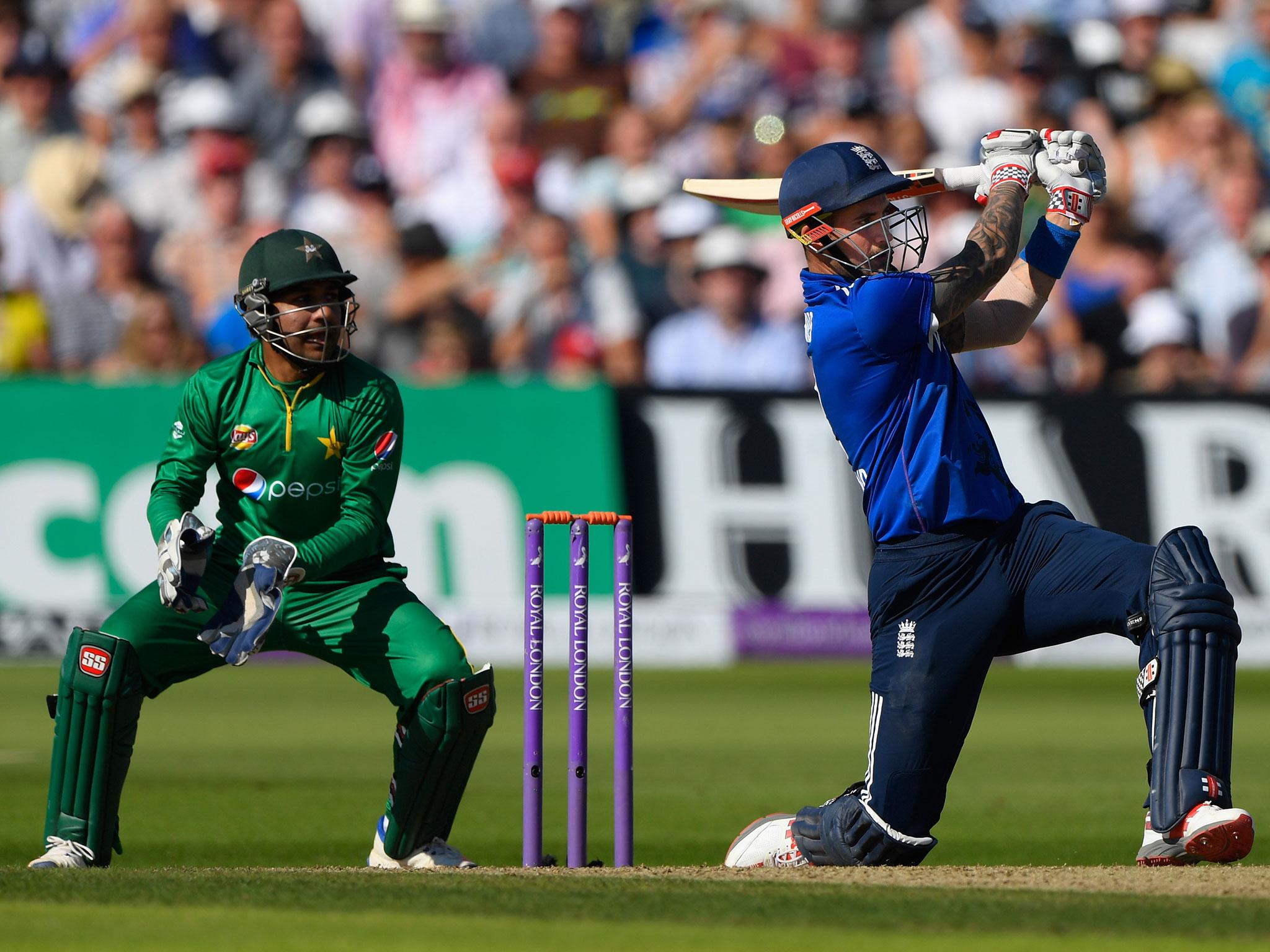England vs Pakistan: Hosts set new ODI scoring record, but it will be lucky to last the year
The way bat so easily subverts ball when the pitch is flat and the weather fair, there might be an even higher total on the horizon

White ball scores are on the move and heading for the stars if England’s recent efforts are anything to go by, including Tuesday’s world record 444 for three against Pakistan at Trent Bridge.
Since England’s disgraceful exit from the 2105 World Cup 18 months ago, they have posted six of their top eight highest 50-over scores (all 300 plus) in the 45-year history of the format. Abject embarrassment, it seems, can be wonderful at focusing sporting minds and bodies.
It was more than shame, though, which saw England set a new world record in Nottingham. Pakistan may be the world’s number one Test team, but their one-day side is not yet in that league and they are currently ranked ninth, four places below England.
Although there are several players common to both sides, they are without their inspirational captain Misbah-ul-Haq - the white ball form being considered a young man’s calling.
Save for Hasan Ali, Pakistan’s bowling attack at Trent Bridge was the same used in the Tests and the mounting fatigue was evident. What could go wrong did, with catches dropped and batsmen dismissed off no-balls, something that twice befell Wahab Riaz. Not the most phlegmatic soul, Wahab may need more than a comradely “bad luck” to forget his 10 overs here which went for 110 runs, the second worst figures in one-day internationals.
Pakistan also came up against Alex Hales, pushed to an all or nothing innings by his recent poor form, rediscovering his mojo and then some. Beauty and the beast usually exist independent of each other, but they both lived in Hales on Tuesday as he alternately stroked then scythed Pakistan’s bowlers to distraction in front of his home crowd on a benign pitch.
Good fortune enabled him to keep hitting boldly and with the utter belief that he would break Robin Smith’s 23-year old record of England’s highest score in a one-day international.
Smith, who possessed power but none of the fancy ramp and scoop shots beloved of so many today, had 55 overs to do his damage against Australia at Edgbaston in 1993. Yet Hales had advantages not bestowed upon Smith, such as smaller boundaries (he struck four sixes to Smith’s three), better bats and bowlers no longer ashamed at not finding the block hole with yorkers.
Where today’s England team differs from the one Smith played in is that the destruction does not stop with one or two men. Indeed, Jos Buttler and Eoin Morgan scored even more quickly than Hales. Buttler, who had made just one run off his first seven balls, reached his 50 off 22 balls (an England record), while Morgan took 24 to get to his.
To think that a world record score was set without Ben Stokes even getting in boggles the mind. And that really is the big difference between now and when I played in the 1980s and 90s. Back then, bowlers would identify the three batsmen in the opposition who might be able to take you apart by hitting sixes, and make sure that you didn’t feed them any easy hits. Now bowlers identify the one or two batsmen who can’t, and think: ‘Hope I get lucky.’
Gratifying though such hitting depth is, England can be doubly proud that their total was made without any of the quirks that enabled three of the other top four one-day international scores to be where they are in the pantheon.
Although set 10 years ago, Sri Lanka’s 443, the previous world record, came against the Netherlands at Amstelveen, a postage stamp of a ground between dykes near Schipol Airport. Weak opposition, small ground, it is a bit like a county cricketer having his career best against Oxford or Cambridge, it’s just not pukka.
The other two leading totals, both by South Africa, were each made in Johannesburg at the Wanderers, where a quick, true pitch and medium sized arena are easily tamed by batsmen and the altitude. Eoin Morgan, England’s white ball captain, once hit a six there that travelled all of 140 yards as it exited the stadium never to return. He hit some good ones against Pakistan, too, but none broke the seal like that one.
Trent Bridge is at sea level, give or take 200 feet, and Pakistan are a talented side being former World Cup winners, which makes this a record without a clause.
There will be those who point to the dollops of luck England had, mostly during Hales innings, but they need to recognise the missed opportunities to add further to their total, such as when Buttler swung and missing at six or seven slower balls.
If he’d have made contact, England might, given a decent wind, have scored another 20-30 runs. Then, 470 would have been scored, a record that might have lasted a decade.
As it stands, and the way bat so easily subverts ball when the pitch is flat and the weather fair, it will be lucky to last the year.
Subscribe to Independent Premium to bookmark this article
Want to bookmark your favourite articles and stories to read or reference later? Start your Independent Premium subscription today.

Join our commenting forum
Join thought-provoking conversations, follow other Independent readers and see their replies